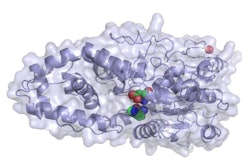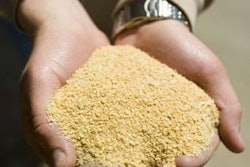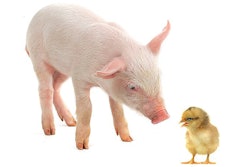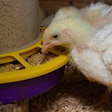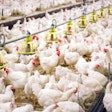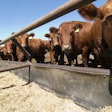
Trusted methods exist and they should be considered first before modern additives are tested at considerable cost.
Last year, there was commotion regarding the impeding final (again) zinc oxide ban in the EU as a pharmacological additive in piglet feeds.
I have dealt with this issue since the early 2000s in the U.S. and again in Spain and the whole of Europe, and I continued to do so in parts where zinc oxide is still allowed, such as China and Latin America. Therefore, I do not really understand why, now, there is such noise on a subject I considered closed. In fact, I have not been using zinc oxide at pharmacological doses since 2012.
At any rate, I believe it is always good to repeat successful recipes and this is how we have battled diarrheas in the absence of zinc oxide and, of course, antibiotics – both used as growth-promoting agents.
The following approaches worked in more than one case, but not all together in the same formula, so a local nutritionist should use these as a guideline and not as definitive instructions to adjust commercial formulas.
-
Organic acids
This technology is now decades old, and it has been proven that adding enough organic acids can replace antibiotics and zinc oxide. Organic acids can control the growth of bacteria, especially when used in blends, and at appropriately high dosages. They work best when combined with other methods of controlling gut microbiota.
-
Copper sulfate
Long before zinc oxide, there was copper sulfate, which is still allowed, albeit at much reduced rates. It is inexpensive and it can offer similar results to zinc oxide, at least in most cases. Modern forms of copper should not be ignored as they offer substantial benefits in terms of performance and manufacturing, something that is often ignored.
-
Modern forms of zinc
These can be used at lower levels (how low remains to be seen) and they can play a role in removing the super high pharmacological levels of normal zinc oxide. They are very product-specific, so watch out for copy-paste products.
-
Reduced protein levels
This has been said so many times and ignored equally as many that it has become redundant. Still, excess protein feeds the bad bugs and lower crude protein deprives them from nutrition. Still, it is hard to explain the concept of ideal amino acid profile to some parts of the world and the correct use of feed-grade amino acids.
-
Fiber, but which one?
We need insoluble fiber in the upper gut to control flow and water concentration, and fermentable fiber in the lower gut to control good bacteria growth. At least, that is the theory.
One also must consider measures that extend to issues regarding biosecurity, vaccinations, management, facilities, genetics, etc., but as far as nutrition is concerned, the above five points are still a good starting point when zinc oxide removal is in question.

